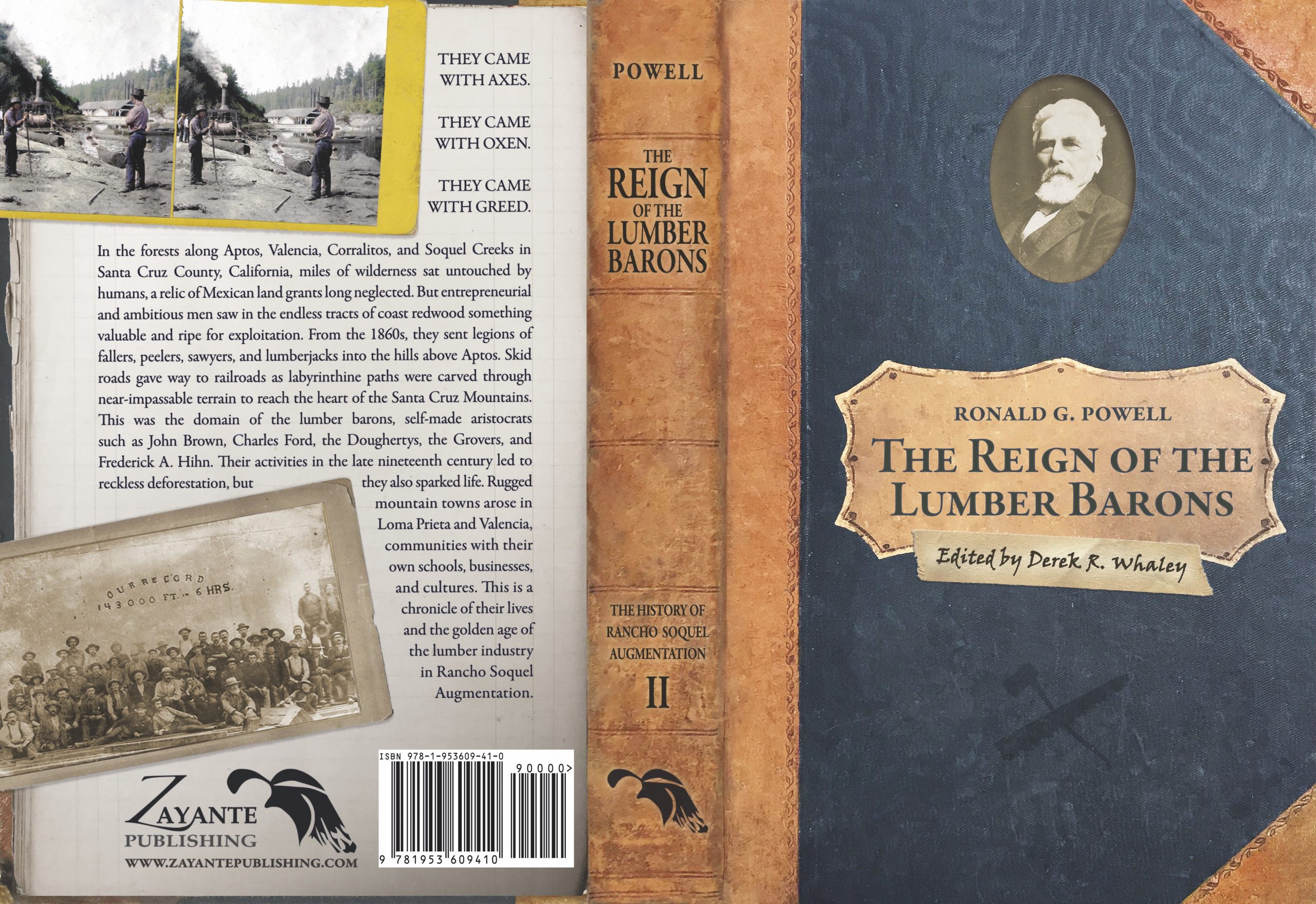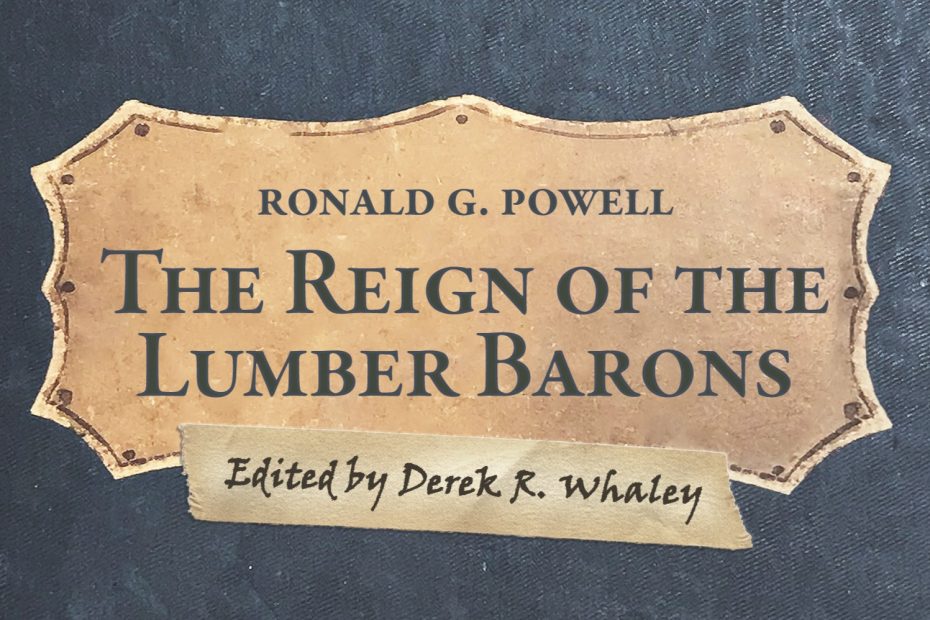Explore mid-county history in new book on the lumber industry in the late 1800s
SANTA CRUZ, CA, October 23, 2021—They came with axes. They came with oxen. They came with greed.
Nearly 150 years ago, a group of venture capitalists began the clear-cutting of what became The Forest of Nisene Marks. By 1902, the decimation along Aptos Creek was complete, leaving behind nothing but broken trees and barren hills as far as the eye could see.
In his new book, The Reign of the Lumber Barons, local researcher Ronald G. Powell chronicles the golden age of the lumber industry in the hills above Aptos and Corralitos at the end of the nineteenth century. Through first-hand accounts, newspaper clippings, and personal explorations, he examines how Santa Cruz County’s entrepreneurs systematically harvested tens of thousands of old-growth trees to produce lumber used in the development of the Bay Area.
The stories of the county’s lumber barons are revealed in detail, with highlights of their lives and careers in relation to their activities on the former Mexican land grant known as Rancho Soquel Augmentation. The book examines John Brown, Charles Ford, John Porter, William Dougherty, Frederick Hihn, the Grovers, Timothy Hopkins, and many others.
Yet this new history also uncovers the lives of those who lived in the logging towns and camps of the Santa Cruz Mountains—places such as Loma Prieta and Valencia. These were normal people, living normal lives with their families.
This is a sequel to 2020’s The Tragedy of Martina Castro and is part two of The History of Rancho Soquel Augmentation series. Based on archived manuscripts produced by Powell prior to his death in 2010, this series has been masterfully edited and enhanced by local historian Derek R. Whaley, who has expanded the original text and updated sources throughout.
The Reign of the Lumber Barons: Part Two of The History of Rancho Soquel Augmentation by Zayante Publishing is now available for purchase from Amazon.com in print or as an ebook (Amazon Affiliates link).

Book Launch Trailer
From the back of the book
THEY CAME WITH AXES.
THEY CAME WITH OXEN.
THEY CAME WITH GREED.
In the forests along Aptos, Valencia, Corralitos, and Soquel Creeks in Santa Cruz County, California, miles of wilderness sat untouched by humans, a relic of Mexican land grants long neglected. But entrepreneurial and ambitious men saw in the endless tracts of coast redwood something valuable and ripe for exploitation.
From the 1860s, they sent legions of fallers, peelers, sawyers, and lumberjacks into the hills above Aptos. Skid roads gave way to railroads as labyrinthine paths were carved through near-impassable terrain to reach the heart of the Santa Cruz Mountains.
This was the domain of the lumber barons, self-made aristocrats such as John Brown, Charles Ford, the Doughertys, the Grovers, and Frederick A. Hihn. Their activities in the late nineteenth century led to reckless deforestation, but they also sparked life. Rugged mountain towns arose in Loma Prieta and Valencia, communities with their own schools, businesses, and cultures.
This is a chronicle of their lives and the golden age of the lumber industry in Rancho Soquel Augmentation.
About the author
Ronald Gabriel Powell was an electrical engineer and local research- er from Los Altos, California. He received his engineering degree from Cogswell Polytechnic Institute in San Francisco in 1953. For most of his career, he worked at Lockheed’s Missile Systems division, Rytheon, and GTE Sylvania. He retired in the late 1970s and started exploring and pho- tographing The Forest of Nisene Marks. Around 1990, he began writing his long history of Rancho Soquel Augmentation and later donated his re- search to the McHenry Library at the University of California, Santa Cruz. Powell died on September 11, 2010 at the age of 79.
About the editor
Derek R. Whaley is a historian, librarian, and former resident of Felton, California. He earned a doctorate in history from the University of Canterbury in 2018. He began researching Santa Cruz County history in 2011 and continues to do so from overseas. He has worked at the Santa Cruz Beach Boardwalk and The Tech Museum of Innovation, volunteered at the San Lorenzo Valley Museum and Santa Cruz Museum of Art & History, and is well-known for his Santa Cruz Trains book series and website. He currently lives in Aotearoa New Zealand.
